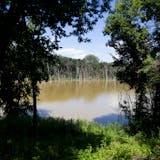Opinion editor’s note: Strib Voices publishes a mix of guest commentaries online and in print each day. To contribute, click here.
•••
As leaders at the Department of the Interior and descendants of federal Indian boarding school survivors, we entered our roles in the Biden-Harris administration with a determined commitment to address the U.S. government’s horrific wrongs of the past. At the Gila River Indian Community in Arizona last month, we joined elders, survivors and their children as President Joe Biden issued the first-ever apology to Indian Country for the federal government’s role in this horrific legacy. This moment was nothing short of historic, and Minnesota played an important role.
Three years ago, our department launched the Federal Indian Boarding School Initiative, a first-of-its-kind commitment from the federal government to acknowledge and investigate the enduring legacy of federal Indian boarding schools. The initiative’s investigative report detailed the scale and scope of these schools and affirmed a loud and unequivocal truth: that the federal government isolated children from their families and stole from them the languages, cultures and traditions foundational to Native people.
While this history is known and felt throughout Indian Country, its painful memory has been largely washed from our history books. For over 150 years, the federal government operated 417 institutions across 37 states or then-territories in conjunction with religious institutions, where at least 18,624 children as young as 4 years old — torn from their families and stripped of their languages, traditional clothes, cultures, lifeways and even their hair — were forcibly sent. In Minnesota alone, there were 20.
Native American history is American history, and we must own, reckon with and heal from our past if we are to build a stronger, more resilient future for each of us. That includes sharing and bearing our own scars for the world. For over a year, we traveled on “The Road to Healing” — a tour of 12 visits throughout Indian Country, including to the Mille Lacs Band of Ojibwe community — that gave survivors and descendants an opportunity to share their boarding school experiences and the painful aftermath those schools left behind.
During our visit, survivors and descendants shared their harrowing experiences of abuse and neglect — many for the first time publicly — under the most egregious conditions. Together, we wept, we remembered and we healed. To those of you who shared your stories, we thank you from the bottom of our hearts. Your experiences and those of your loved ones are part of the fabric of our work.
Our investigative report included a list of recommendations to support a path to healing the nation. The report’s first recommendation was an acknowledgment and apology from the federal government. That the president took this step is a demonstration of the impact of the Indigenous people who, through this painful but necessary work, shared their stories guided by a sense of duty to honor the sacrifices of our ancestors. We were proud to join him for his first visit to Indian Country and a moment which cemented a turning point in our nation’s reckoning with this shameful chapter of our history. While we can never rewrite our past, we can ensure that it is never forgotten.



